|
The Cuu Long River Delta is
known not only as a rice producing hotspot but also for having the most
abundant store of fish in
Vietnam
.
Consisting of 12 provinces and one city, this area accounts for over 70%
of aquatic products in the country, with its natural catching output
accounting for 39% and aquaculture and export accounting for 90%.
nbsp;Promoting the existing potential
Since long ago, the Cuu
Long River Delta has been known as an area abundant with shrimp and fish,
because it has a dense system of rivers and canals and a large fishing
ground at sea. Having the fortune of being part ofnbsp; economic sea area covering
360,000km2,
hundreds of islands in the large fishing grounds of south-east and
south-west, and a system of 22 interlacing rivers yielding 800,000ha of
fertile alluvia, the Cuu Long River Delta provides a favourable
environment for aquaculture and facilitates transport and trade
activities.
|

The fleet of offshore fishing boats.
|
|
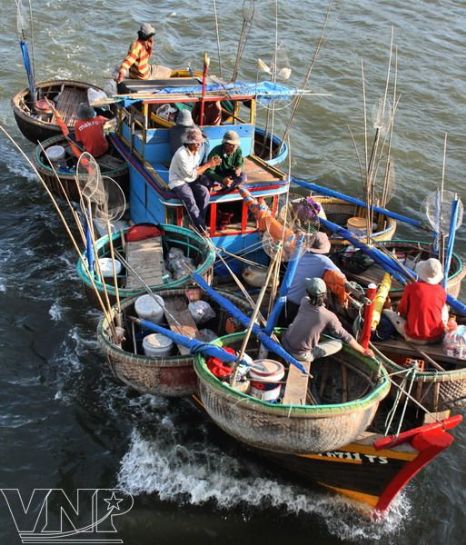
Cuttlefish catching
boats.
|
|
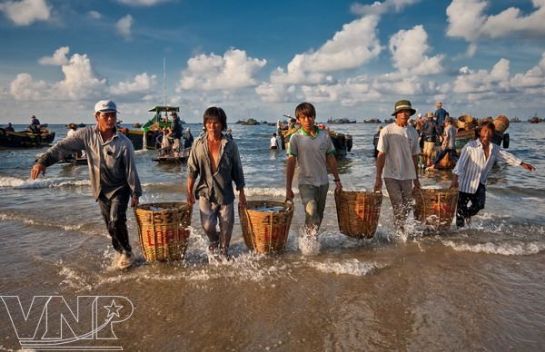
Transporting fish
from the boats to the mainland.
|
|

Fishing
mackerel.
|
|
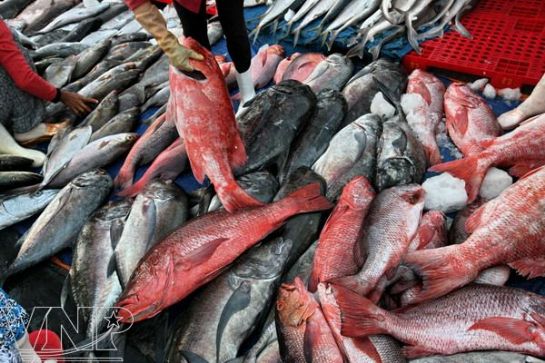
Gift from the sea.
|
|

Harvesting
Tra fish.nbsp;
|
|
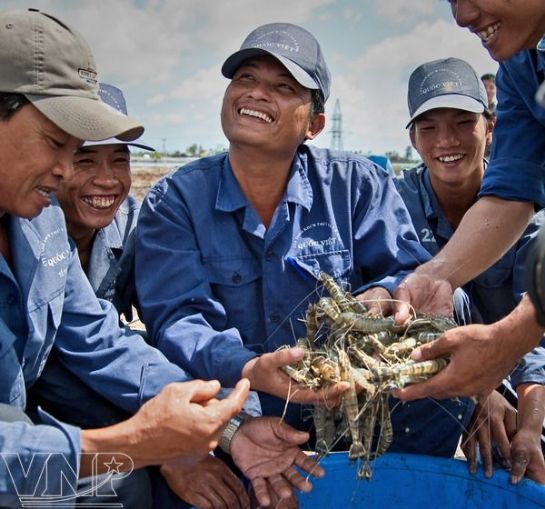
Happy with a good harvest of
shrimp.
|
|

Checking the fish quality.
|
|

Rearing fish in raft
cages.
| nbsp;
Due to
these advantages, for a long time, aquaculture has been a major business
of many localities in the Cuu Long River Delta, such as Tien Giang, Long
An, Ben Tre, Tra Vinh, Soc Trang, An Giang, Dong Thap, Ca Mau, Can Tho and
Vinh Long, creating an incentive for regional socio-economic
development.
The
south-eastern and south-western fishing grounds are the two main natural
exploitation areas, with a reserve of nearly 3 million tonnes of fish
(accounting for 62% of the country’s output). The annual catching capacity
in these fishing grounds is 1 million tonnes, including about 700,000
tonnes of bottom layer fish and 300,000 tonnes of surface layer fish.
There are also many categories of valuable aquatic products, such as tiger
prawns, shrimp, cattlefish and mollusca.
According to the 2008
statistics, the entire Cuu Long River Delta had 25,000 fishing boats,
including over 3,500 offshore fishing boats, which concentrated mainly in
Kien
Giang
Province
,
creating the country’s most powerful team.
The Cuu
Long River Delta has many salt-marshes, especially at the river mouths,
creating a rare and diverse eco-environment (salty, fresh and brackish
water) to develop the rearing of high quality sea- and aquatic-products
for export. Particularly, the brackish water area is very suitable for
rearing smooth-skin fish, shrimp and mollusca.
In 2009 the output of
aquatic products reared in the Cuu Long River Delta was over 1 million
tonnes of Tra and Basa fish, and 275,000 tonnes of brackish water
fish, excluding natural aquatic products, such as snake-head, bighead
carp, shrimp, oyster, lobster, crab, etc.
To fully
exploit the potential and strength of the sea- and aquatic-product
rearing, since long ago, localities in the Cuu Long River Delta have
established and developed a logistical service system to meet the
increasing demand on aquaculture.
At present, the Cuu Long
River Delta has over 1,280 farms producing breading shrimp that provide
over 12 billion breeding shrimp, and about 5,200 facilities producing
breeding Tra fish that provide about
2 billion breeding fish a year. In addition, there are nearly 150
factories producing feed and 2,313 facilities trading medicines and
chemicals in service of rearing and protecting sea and aquatic-products in
the entire region.
In the
coming years, the aquatic product sector in the Cuu Long River Delta has a
target of increasing the aquaculture area to 830,000ha and the output to
nearly 3 million tonnes, reaching an export turnover of 4.47 billion USD
and a natural catching output of 900,000 tonnes of fish, shrimp, cattle
fish and other mollusca.
To reach
this target, the Government and relevant offices have worked out many
policies and solutions to bring into full play the existing strengths and
potential of the Cuu Long River Delta. Under these policies the localities
will maintain the model of rearing shrimp and growing rice alternately or
intensive rearing of shrimp in salt-contaminated areas; intensive rearing
of smooth-skin fish in fresh water areas; rearing traditional rice field
fish, such as tilapia, chinaman fish, common eel, bighead carp, major
carp, grass carp, snake-head, eel, frogs and tryonix in the flood plains.
The localities will also re-organise production activities in the models
of intensive farming and semi-intensive farming at the household level and
transferring the application of new technology in all phases, from
producing the breeding animals to rearing them on a large scale. Special
attention will be paid to the rearing model which is environmentally
friendly, causing no pollution and reducing risks to the rearing
pools.
Increasing
the processing and exporting capacity
Up to 2008 the entire Cuu
Long River Delta had 189 processing plants with a total designed capacity
of 1.2 million tonnes/year. Of these plants, 50% belong to Ca Mau, Kien
Giang, An Giang and Tien Giang Provinces and Can Tho City, which
produced the greatest amount of shrimp and Tra
fish.
|
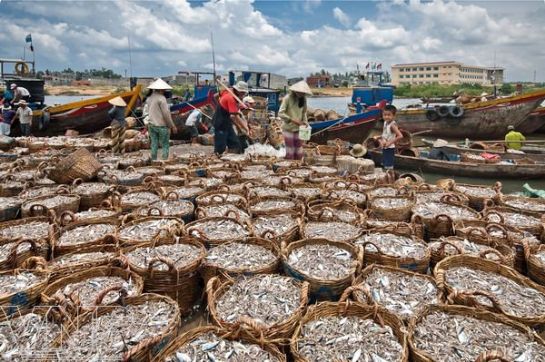
A good harvest of
anchovy.
|
|
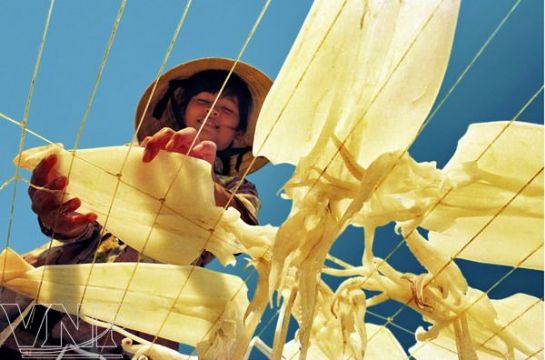
Dry cuttlefish is a
product of high economic value.
|
|
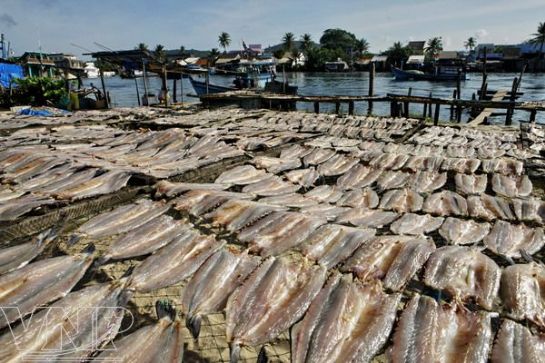
Drying
fish.
|
|
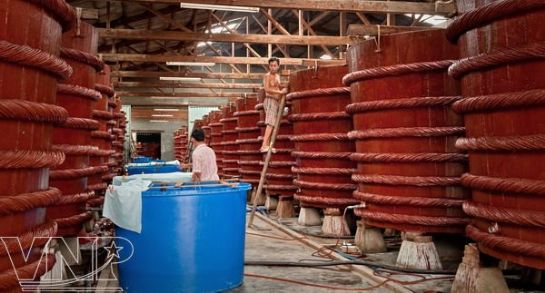
A fish sauce
production workshop in Phu Quoc.
|
|
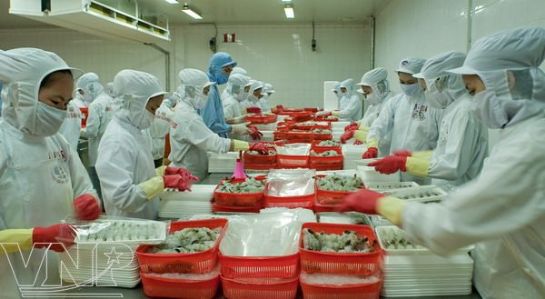
Processing sea products for export at Minh
Phu Company (Ca Mau Province).
|
|
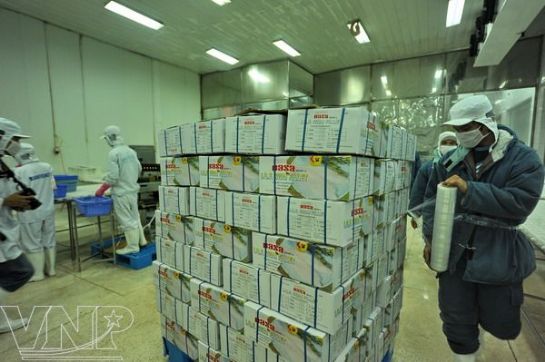
Containers of
frozen Tra fish fillets at An Binh Company (Can Tho
Province).
|
|

Goods
counters at Can Tho Aquatic Product Trade Fair (April
2010).
|
|

Partners
exchange information at Can Tho Aquatic Product Trade Fair (April
2010).
| nbsp;
Export turnover of aquatic
products of the Cuu Long River Delta is constantly increasing, from 1.2
billion USD in 2003 to 4.25 billion USD in 2009. Now, aquatic products of
the Cuu Long River Delta in particular and of Vietnam in general are
available in 130 countries, including large and selective markets, such as
the EU, ASEAN, China, Australia, South Korea, Japan and the US. The main
exports include smooth- skin fish, tuna, shrimp, cattlefish and many other
valuable products. It is estimated that the world’s demand on aquatic
products from now to 2020 will increase strongly, with the possibility of
adding some new markets, such as
Russia,
Poland
and South American
countries.
To increase
the capacity of Vietnam’s aquatic product sector on its way to integration
with other countries, in March 2010, Vietnam Fisheries Society established
the International Centre for Aquaculture and Fisheries Sustainability
(ICAFIS) to carry out international co-operation programmes, ensure
sustainable development, grant certificates for aquatic- and sea-products,
and build up brand names under the Global GAP standards to establish a
worthy position of Vietnamese aquatic products in the integration
period.
According to evaluation by
ICAFIS,
Vietnam is
ranked third in the world in aquatic product output and export (after
China and
India
), but
stands first in development speed.
Dr. Flavio Corsin, ICAFIS
Co-Director said: “Aquatic-product diseases and the concern about food
safety bring more difficulties to fishery, affecting both quantity and
quality of products.
Vietnam
is among the leading
countries in making efforts to seek solutions for these
difficulties.”
In April
2010, a seminar on Vietnamese aquatic products was held in Can Tho City,
drawing attention from scientists, entrepreneurs and representatives of
farmers and fishermen. Addressing the seminar, Luong The Phuong, Deputy
Minister of Agriculture and Rural Development emphasised: “The
relationship between the farmers and entrepreneurs is very important on
the basis that the benefits of both sides are ensured equally and
reasonably. In the coming time this relationship must be strengthened to
become a decisive factor for the firm and sustainable development of the
aquatic product sector.”
To
gradually improve the quality of products to meet export requirements, the
production facilities are finalizing the organizing of the rearing areas
while the businesses specializing in processing and exporting products
specify the origins and brand names of products on the packing and
implement solutions for sustainable development and environmental
protection, such as increasing the supervising system, applying
micro-organic and bio-gas technology for organic waste treatment at the
fish wharfs and having policies to support the processing businesses to
build waste water treatment systems. In addition, many policies on human
resource development, capital assistance by the banks and logistical
service improvement of the aquatic product sector have been gradually
implemented throughout the country.
There is a
great potential and clear orientation for the development of the aquatic
product sector of the Cuu Long River Delta. Along with the efforts to
build up a powerful sea economy, including maritime transport, sea tourism
and energy (tide, sea current, wind and sun), the rearing, tapping and
processing of aquatic and sea products hold a primary position in building
the national economy.
With
existing potential and strength, people in the Cuu Long River Delta
believe that in the near future aquatic and sea products with Vietnamese
brands will account for a considerable market share in the world, bringing
a great turnover to the national budget and vigorously changing the life
of people in the Cuu Long River Delta, a fertile area with abundant fish
and shrimp.
Story: Thinh
Phat
Photos: Quang Minh –
Kim Son – Minh Quoc – Huu Thanh – Thinh Phat |